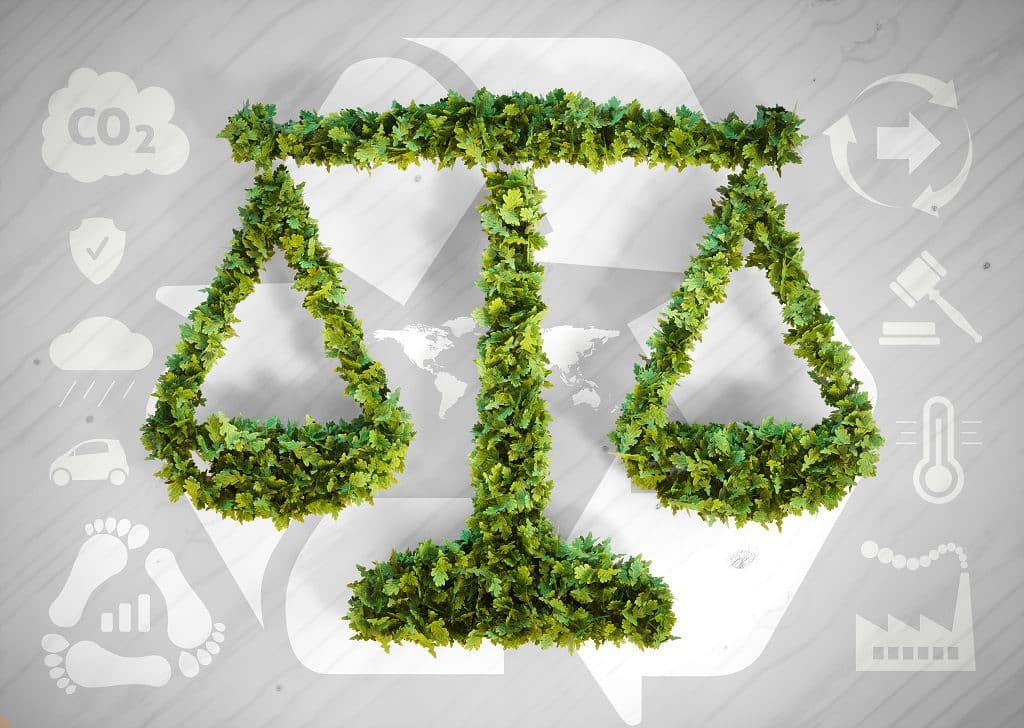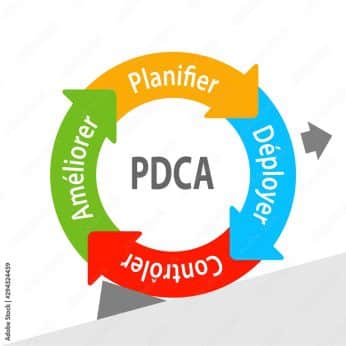Environmental issues are increasingly top of mind, and companies are responding to them more than consciously. But how can this concern be translated into action, and what are the issues at stake?

Companies have undeniably played a key role role in the acceleration of global warming that concerns us all today. However, decision-makers need to be aware of the challenges of the ecological transition in order to define a winning strategy, both for society and for the company itself. Catherine Viale, an expert in environmental management systems and ISO 14001 certified, explains the benefits of implementing a corporate environmental policy and what needs to be taken into account to make it effective.
Why implement an environmental policy as part of a CSR approach in 2022?
CSR (Corporate Social Responsibility) is based on three pillars: environmental, social and economic. For a company, it is often easier to identify the issues associated with the human (well-being of its staff and the community) and economic (balance between profits and investments) aspects. On the other hand, they find it harder to understand the benefits of investing in the ecological field to ensure sustainable development.
4 major challenges
The first milestone in ecological awareness was reached in 1987 with the Brundtland Report, which gave a definition to the concept of the environment. sustainable development and makes it one of our most pressing concerns. It includes the need for companies to review the use of their resources (human, material, energy, etc.), opening their eyes to a wide range of issues.
- Specific regulations: since the Brundtland report, a large number of legislative texts and standards have been guiding companies towards a more sustainable approach. governance reasoned. They need to strike a balance between virtuous objectives, the resources at their disposal and the profits they can make (law on energy transition and green growth, anti-waste and circular economy law, etc.).
- Increasingly demanding customer requirements: consumers are taking environmental concerns on board, making the ecological commitment of companies a criterion of choice.
- Public opinion: fuelled by increasingly frequent natural, human or economic disasters, public opinion is demanding accountability, which means that companies need to publicise their environmental actions and policies. Training : CSR communication, enhancing your company's image
- Consumption of natural resources: the current shortage of raw materials is making many companies realise that it is essential to open up to alternatives or make fundamental changes to their operations in order to ensure their long-term survival.
Often driven by profitability needs and investment constraints, or quite simply by a lack of interest, companies are comforted by a "short-termist" vision. More than legal or regulatory constraints, it is the economic pressure exerted by public opinion and customer demand that can push them to change their habits. And therefore to adopt an environmental approach that is favourable to their development, or even essential to their survival.
How to structure your environmental policy
For a winning approach, management must be the first to commit, with a clear approach to the match between the environmental challenges and the elements of its DNA:
- mission - what does my company do?
- values - what are they?
- vision - how will the company evolve?
It is then up to the company to set the objectives and the resources it uses to achieve them. This is why an environmental policy must be defined and implemented as a long-term project that supports the company's overall development strategy.
Pragmatic implementation
To move from reflection to action, we adopt a tried and tested methodology: the Deming wheel or PDCA wheel (plan, do, check, act).

The company needs to work in stages (sprint) and validate them before going any further.
- Take stock of the current situation and deduce improvement targets The company must first assess the direct and indirect impact of its activities, products or services on its environment (immediate, regional or global) and determine the limits of its influence. This enables it to assess the risks and opportunities of a specific approach in relation to its current performance and its development objectives (why should it invest?).
- Setting up a team project The team: this involves identifying the people (decision-makers and managers) who will ensure that the key stages of the process are completed. The team must be cross-functional (HR, communicationIt must also be regularly organised according to progress benchmarks (steering committee, action plan review, etc.). Relays must also be identified in all departments to raise awareness and support all employees in changing their practices.
- Measuring performance and monitoring the effectiveness of the approach Relevant indicators enable the company to understand its impact on the environment and to ensure that the resources deployed are efficient (reduction in resource consumption, increase in the recycling rate, etc.). These indicators enable the company to ask itself the right questions at the right time. If the objectives are not being met, is the company on the right track? Does the project need to be restarted from scratch or does it simply need to be adjusted?
An environmental policy: what recognition?
Recognition has two distinct aspects: quality recognition (certifications, labels, etc.) and public recognition. While the latter is a popularity contest, the former is measured and valued on two levels, thanks to green, ecological, eco-responsible labels, etc. These two levels are..:
- product recognition ;
- recognition of the global approach.
Labels, certifications and standards
Understanding the differences between labels, certifications and standards is an essential prerequisite for implementing an environmental policy and achieving the recognition it requires.
- Labels They guarantee the quality, safety, harmlessness and/or traceability of a product or service.
- Certifications : they guarantee good organisation or a global approach to reducing a company's impact on the environment.
They are valid for a limited period and are issued by independent bodies on the basis of a certain number of requirements to be met, as set out in a reference system. These criteria apply to the design, production and use of the audited product or service.
The standard, on the other hand, only applies in the case of certification. It is the name given to the standard that certifies all the efforts made by the company to improve its performance. These standards include ISO 14001 for environmental management and ISO 5001 for energy management.
Why promote your approach?
If these criteria are met, the product or service is labelled. This system enables users and consumers to identify clearly and quickly a guarantee of ecological quality (e.g. European environmental ecolabel, ecocert, etc.).
In addition, two types of recognition are excellent sales and marketing arguments for customers (and the media) who are increasingly demanding eco-responsible products and services.
What's more, the standards (notably ISO standards) are international. So they can be used on a wider scale.
Training : ISO 14001, environmental management, foundation, certification
Focus on the "Implementing a corporate environmental policy" training course
Training Implementing a corporate environmental policy is based on three fundamental principles:
- deconstruct preconceptions about ecology so that participants can make sense of their approach;
- provide the methodological keys to structuring a project adapted to their personal situation ;
- make it possible to define the benefits of third-party recognition according to a relevant standard.
The teaching method is based above all on practical situations and the sharing of experience between learners and the trainer. The idea is to get each participant to draw up an action plan that will produce tangible results for the company on all fronts: economic, social and, of course, environmental. The tools tested during the training include the material/energy balance sheet, stakeholder mapping and the action sheet.
Finally, the course will help students to distinguish between the many environmental claims that exist, and to highlight those that are trustworthy. It also presents the procedures for obtaining these claims, so that learners can make the right choice for their particular situation.
Developing an environmental policy and adopting a CSR approach requires companies to be willing and to invest over the long term. This type of project requires employee awareness-raising and training, as well as impeccable external and internal communication.


